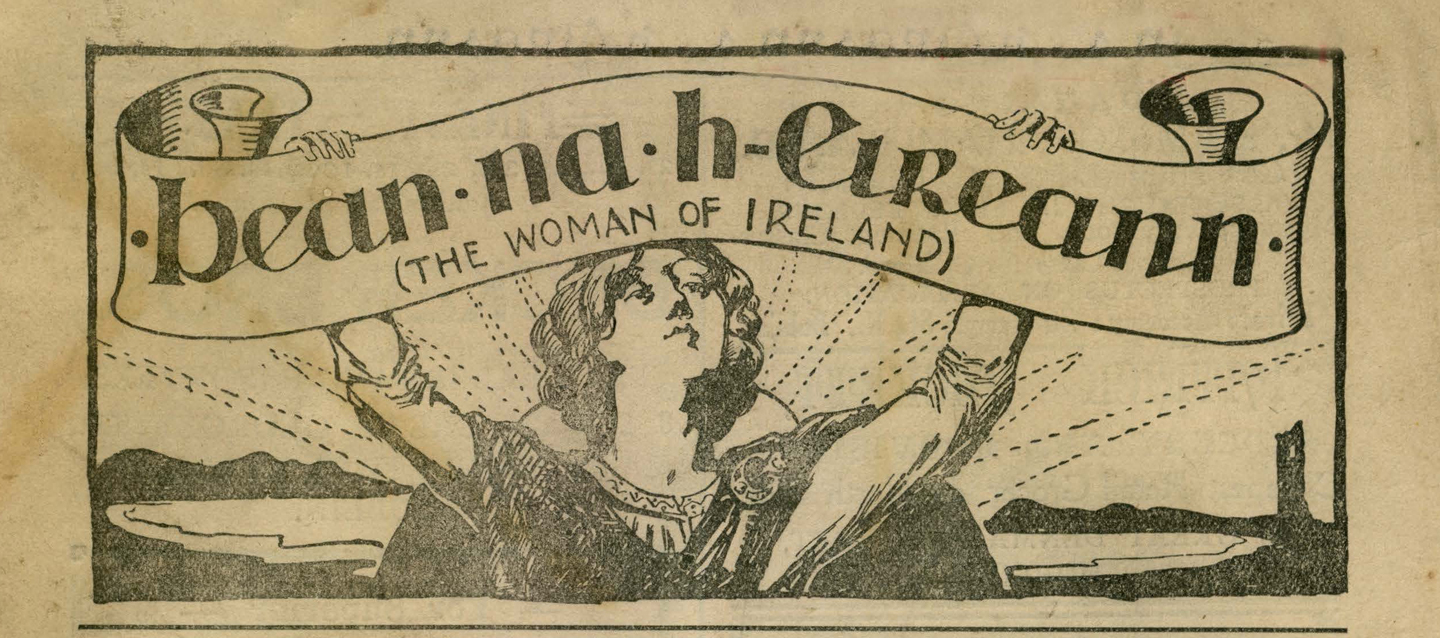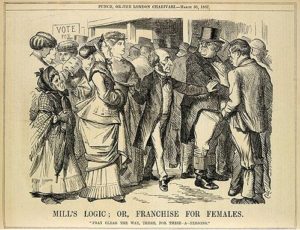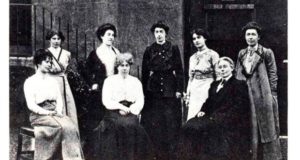Beginning in 1847, the Dublin Women’s Suffrage Association was founded by Anna M. Haslam with the goal of parliamentary franchise for women. Inspired by the actions of London and Manchester’s Suffrage Committees, 25 Irish women signed the first suffrage petition in 1866. The petition was presented to the House of Commons by John Stuart Mill.
“We ought not to deny to them, what we are conceding to everybody else—a right to be consulted; the ordinary chance of placing in the great Council of the nation a few organs of their sentiments—of having, what every petty trade or profession has, a few members who feel specially called on to attend to their interests, and to point out how those interests are affected by the law, or by any proposed changes in it.”
A year after Mill first presented the petition, the first debate regarding a woman’s right to vote was held. Although the proposition of Women’s Suffrage lost, the amount of support, 73 votes in favor, delighted Mill. However, 73 votes were not going to enfranchise women.
Through the Local Government Act of 1894, single, and in some cases married, women were enfranchised for local elections. However, a larger issue than most suffragettes foresaw came to be. By signing petitions with Suffrage Movements from England, the women of Ireland allied themselves with the ‘English enemy’, as seen by a growing population of disgruntled Irishmen.
In 1908 Hannah and Francis Sheehy-Skeffington and Margaret Cousins founded the Irish Women’s Franchise League (IWFL) which focused on securing Women’s Suffrage within Home Rule. According to the History of Ireland magazine,
“The IWFL was the most outspoken and public manifestation of women’s discontent and radical feminism in Ireland.”
The tensions between the Home Rule and Suffrage Movements were enflamed when the Suffrage movement was ‘swept under the rug’ of Irish interest and news in the early 1900s. According to the History of Ireland magazine, “From the headlines for the years 1912-14 Home Rule and its progress or otherwise dominated all local and national papers in Ireland. A simple survey of general history books for this dramatic period would lead one to believe that the women’s movement had passed Ireland by, that there had been no Irish suffragettes.
This obliteration from news and history angered the suffragettes, and many took up the call ‘No Home Rule before Suffrage’. While some women movements supported the revolution, Cumann na mBan for example, others strictly opposed it.
This led women to take opposing paths of intervention to make their voices heard. In her book, ‘Suffrage First-Above All Else!’ An Account of the Irish Suffrage Movement Margaret Ward tells of how women often chose between “putting pressure exclusively upon the faction [women] identified with politically-home rulers or unionists- in order to ensure women’s enfranchisement would be included within any constitutional settlement or campaign wholeheartedly for one faction.”
Not only were the Home Rule and the Suffrage Movements butting heads, but tensions developed and persisted between and within the Irishwomen of the Suffrage Movement. Especially due to the terse nature in which the North and South interacted at this time, it became increasingly difficult for the suffragettes to ally themselves to a political organization all would support.
“In the early years of the 20th century, the women’s suffrage movement in Ulster gained momentum, but the message from each of the suffrage groups was diverse and complex. Each association had a different focus, from the militant to religious, constitutional to feminist. The North of Ireland Women’s Suffrage Society changed its name in 1909 to the Irish Women’s Suffrage Society (IWSS). It was based in Belfast but had many branches outside the city in Bangor, Whitehead, Antrim and Derry and was the militant side of the movement but was not associated with any political party.”
http://www.belfastsuffragettes.com/suffragettes.html
http://https://www.youtube.com/watch?v=dRIrjqrC-WA





